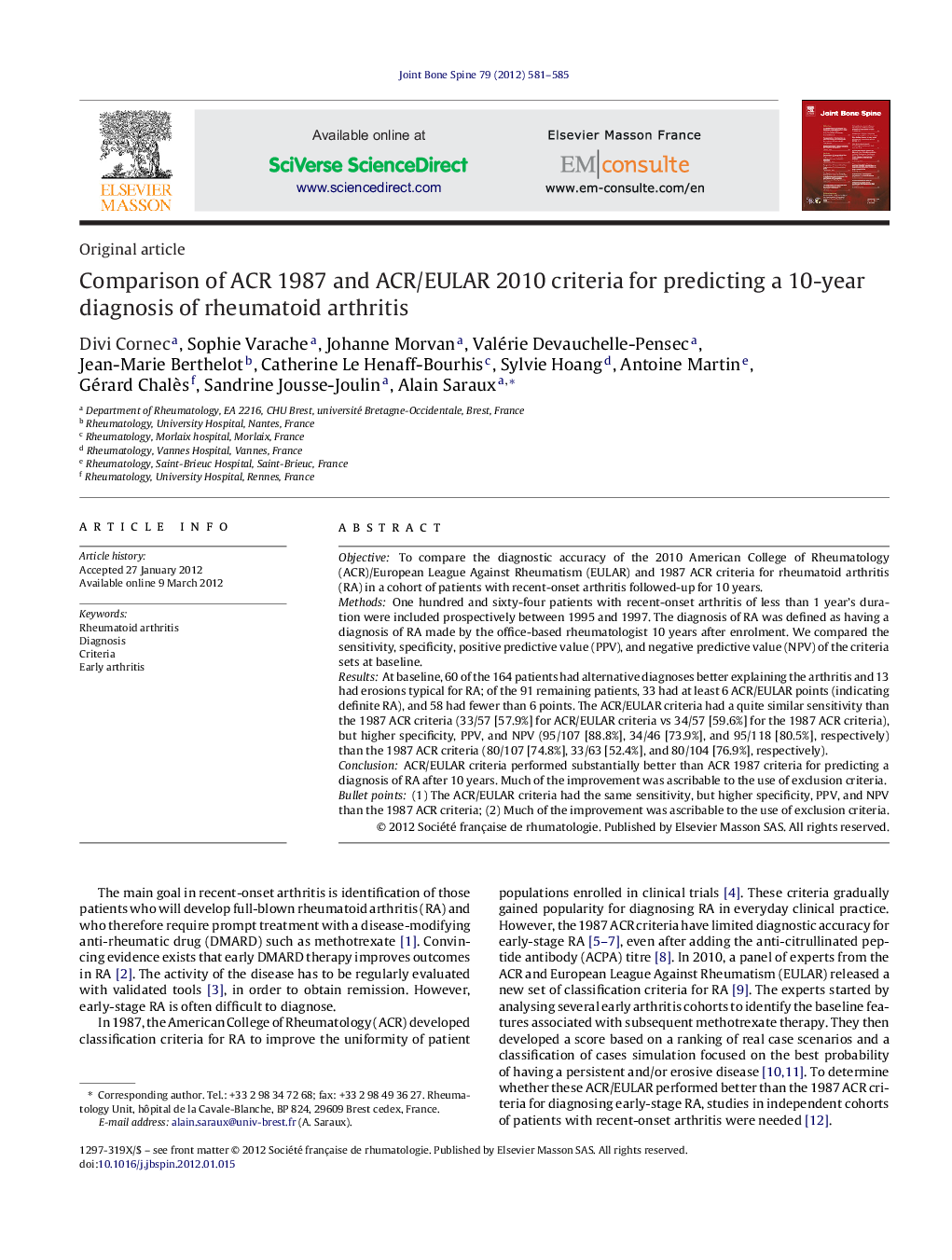| Article ID | Journal | Published Year | Pages | File Type |
|---|---|---|---|---|
| 3366267 | Joint Bone Spine | 2012 | 5 Pages |
ObjectiveTo compare the diagnostic accuracy of the 2010 American College of Rheumatology (ACR)/European League Against Rheumatism (EULAR) and 1987 ACR criteria for rheumatoid arthritis (RA) in a cohort of patients with recent-onset arthritis followed-up for 10 years.MethodsOne hundred and sixty-four patients with recent-onset arthritis of less than 1 year's duration were included prospectively between 1995 and 1997. The diagnosis of RA was defined as having a diagnosis of RA made by the office-based rheumatologist 10 years after enrolment. We compared the sensitivity, specificity, positive predictive value (PPV), and negative predictive value (NPV) of the criteria sets at baseline.ResultsAt baseline, 60 of the 164 patients had alternative diagnoses better explaining the arthritis and 13 had erosions typical for RA; of the 91 remaining patients, 33 had at least 6 ACR/EULAR points (indicating definite RA), and 58 had fewer than 6 points. The ACR/EULAR criteria had a quite similar sensitivity than the 1987 ACR criteria (33/57 [57.9%] for ACR/EULAR criteria vs 34/57 [59.6%] for the 1987 ACR criteria), but higher specificity, PPV, and NPV (95/107 [88.8%], 34/46 [73.9%], and 95/118 [80.5%], respectively) than the 1987 ACR criteria (80/107 [74.8%], 33/63 [52.4%], and 80/104 [76.9%], respectively).ConclusionACR/EULAR criteria performed substantially better than ACR 1987 criteria for predicting a diagnosis of RA after 10 years. Much of the improvement was ascribable to the use of exclusion criteria.Bullet points(1) The ACR/EULAR criteria had the same sensitivity, but higher specificity, PPV, and NPV than the 1987 ACR criteria; (2) Much of the improvement was ascribable to the use of exclusion criteria.
